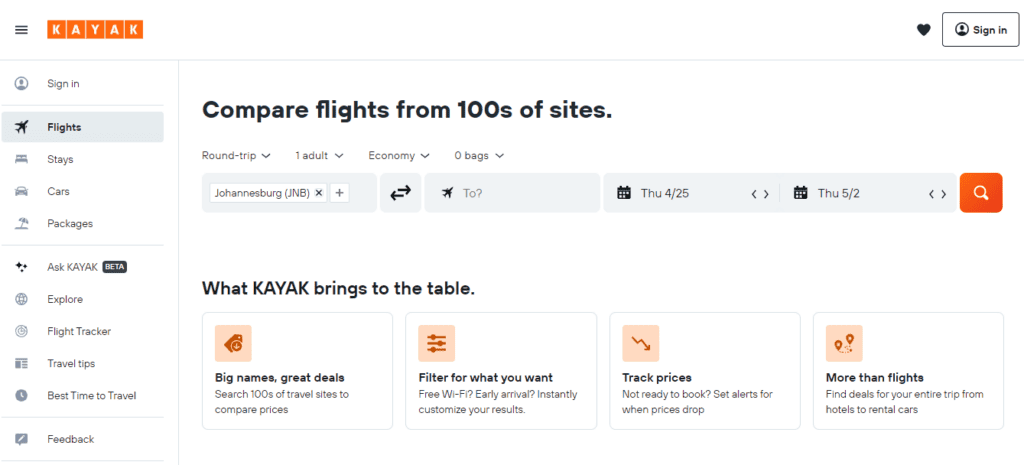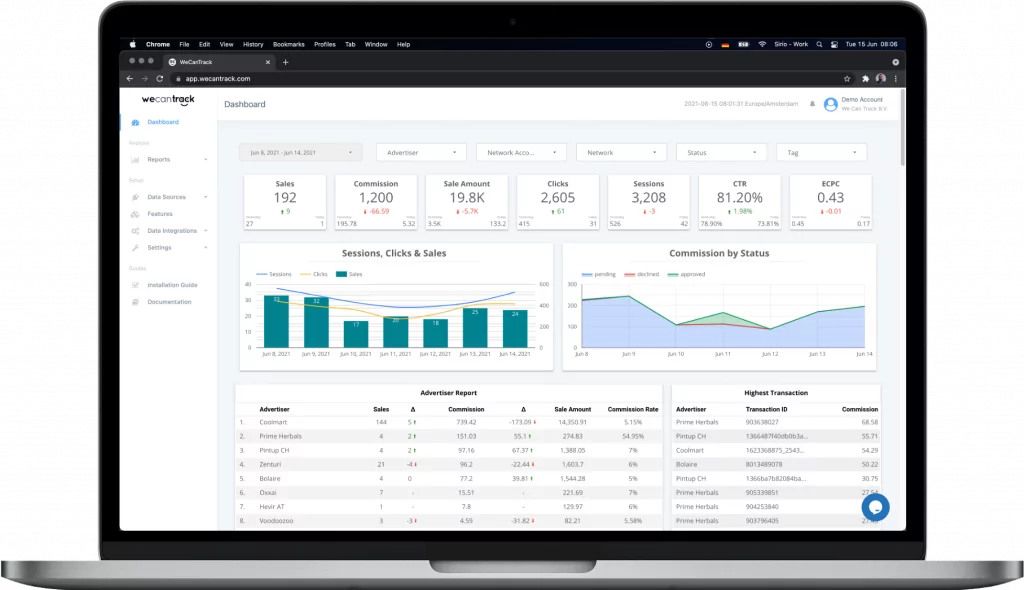Comparison shopping sites are webpages that allow consumers to compare prices, specifications, and goods reviews from different vendors in one place.
These pages earn an income through different models, such as affiliate marketing, advertisements, and lead generation.
In this article, we will start by examining different business models used by comparison shopping sites, continue with revealing what affiliate marketing is and how it helps to make money.
How Comparison Sites Make Money
How Do Comparison Shopping Sites Work?
Comparison shopping websites, also known as price comparison websites, mostly use web crawlers or robots to scan the Internet for information on products from various retailers. The web crawlers collect product data such as price, availability, shipping fees, and other relevant information.
Once the data is collected, comparison shopping websites organize and display the information in a user-friendly interface. Users can filter the search results by different criteria, such as price range, product category, or features.
Some comparison shopping websites also offer additional features such as price alerts, which notify users when a product’s price drops, and wishlists, which enable users to track a product’s price over time.
Another very popular method is product feeds, which are available through affiliate marketing platforms and can be integrated into price comparison websites. This method removes the need for web crawlers, and the data in the feed is frequently updated by the brands with which it partners.
How Do Comparison Shopping Sites Generate Revenue?
Comparison shopping websites generate revenue through several different methods, including:
- Affiliate Marketing: Comparison shopping websites partner with retailers through affiliate marketing programs in several different affiliate networks. When a user clicks on a product link on a comparison shopping website and purchases from the retailer, the website earns a commission on the sale.
- Advertising: Comparison shopping websites may display ads from retailers or other advertisers on their platform. These ads can target specific users based on their browsing history and search behavior. The website earns revenue each time a user clicks on an ad.
- Data Analytics: Comparison shopping websites collect consumer behavior and product preference data, which can be valuable to retailers and other businesses. Some comparison shopping websites sell this data to third-party companies for marketing and advertising campaigns.
- Sponsored Listings: Some comparison shopping websites offer sponsored listings, where retailers pay to have their products featured at the top of search results.
4 Examples Of Successful Comparison Websites
While building a price comparison website may seem daunting, several examples of successful websites have made a name for themselves in different industries.
Here are some examples of successful price comparison websites across different industries:
PriceGrabber.com (Consumer Electronics)
This website provides product comparisons and reviews for consumer electronics and other products. They use affiliate marketing as their top monetization method, earning commissions from sales made through their product links.
PriceGrabber was founded on February 01, 1999, by Kamran Pourzanjani and Tamim Mourad and was the first shopping comparison site to indicate tax and shipping cost information as part of the price comparison process.
In 2005, Experian acquired PriceGrabber for $485 million, but it did not perform as well as expected. By 2012 Experian was prepared to sell the site at a significant loss to an Indian group in a deal that did not come to fruition.
PriceGrabber was eventually bought in June 2015 by marketing services company Connexity (a Taboola company) for an undisclosed amount.
Unfortunately, PriceGrabber.com is only a shadow of its former self. According to Similarweb.com, the site only gets around 78K monthly visits. And although they have an app, it has not gained much traction.
Kayak.com (Travel)
This website provides price comparisons for flights, hotels, and rental cars. They use affiliate marketing and advertising as their top monetization methods.
Kayak was founded in January 2004 by Steve Hafner (CEO) and Paul English, who met over lunch and decided in under an hour to be 50/50 partners. Steve and Paul put in $1 million each in seed capital and raised $5 million from General Catalyst.
They hired a brand agency to help them come up with a name. Their first choice was lola.com, but it was too expensive to acquire. Instead, they settled on their second choice, kayak.com, and paid $30K for it in 2004.
The company went public in July 2012, and less than four months later, on November 9, 2012, it was acquired by Priceline for $2.1 billion and became an independent subsidiary – Priceline Group changed its name to Booking Holdings in 2018.

Today, we process billions of queries across our platforms each year for travel information, helping millions of travellers around the globe make confident decisions. With every query, KAYAK searches hundreds of travel sites to show travellers the information they need to find the right flights, hotels, hire cars, and holiday packages.
Today, Kayak has 1,000+ team members and 26 international offices. According to Similarweb.com, their website gets more than 46 million visits monthly. Steve Hafner is still at the helm as CEO.
PriceRunner.com (Consumer Goods)
This website provides price comparisons for a wide range of consumer goods. They use affiliate marketing and advertising as their top monetization methods.
PriceRunner was founded in Sweden in 1999 by Kristofer Arwin, Martin Alexandersson, and Magnus Wiberg, financed by Cell Ventures. It was one of the first price comparison websites in Europe.
The company changed ownership several times over the years. It includes being sold to Conversant (previously ValueClick) in 2004 and then to American media concern IAC in 2013.
In November 2021, Klarna acquired PriceRunner – the Swedish regulatory authorities approved the deal on March 17, 2022, and since April 01, 2022, PriceRunner officially became a part of Klarna.
Today, PriceRunner is active in the UK, Sweden, Denmark and Norway and comprises a team of 175 PriceRunners.
CompareTheMarket.com (Insurance)
This website provides price comparisons for insurance products such as car, home, and travel insurance. They use affiliate marketing and lead generation as their top monetization methods.
Compare the Market was launched in 2006 by Douw Steyn and is owned by BGL Group (which Douw founded in 1992 as Budget Insurance Company), a UK-based insurance and financial services company.
Since 2006, Compare the Market has become one of the United Kingdom’s most popular price comparison websites, acting as an insurance intermediary between consumers and insurance companies.
Part of its success is due to an advertising campaign featuring comical talking meerkats who have become as popular as Disney characters.
When the commercials launched in January 2009, Douw was worth £200 million, according to the Sunday Times Rich List. Today, he is worth an estimated £420 million.
According to Similarweb.com, CompareTheMarket.com gets more than 11 million monthly visits.

We make money when we find our customers a new deal on their household finances. For example, each time someone buys an insurance product or switches their gas or electricity tariff, having found their new supplier through us, we get paid a fee.
Compare the Market is an excellent example of how much money comparison sites can earn from affiliate marketing monetization.
These price comparison websites are successful because they provide a valuable service to their target audience by making it easy for them to find the best deals on products and services. They also have a clear monetization strategy and use SEO, social media marketing, and affiliate marketing tactics to drive traffic to their site.
Affiliate Marketing For Comparison Shopping Websites
Comparison shopping sites use affiliate marketing to monetize them by earning commissions from sales made through their product links. Affiliate marketing is a cost-effective way to generate revenue without creating their own products or services.
They typically partner with various retailers and brands, providing links to their products on their site. When a user clicks on one of these links and makes a purchase, the comparison shopping site earns a commission from the sale.
To maximize revenue through affiliate marketing, they use various tactics, such as creating product reviews, guides, and comparison charts, to attract and retain visitors. They also use SEO and social media marketing to promote their site and drive organic traffic to their product links.
Conversion Tracking For Comparison Shopping Sites
Conversion tracking and attribution for affiliate marketing efforts on comparison shopping websites are crucial for businesses looking to scale up their marketing efforts.
With advanced tracking and attribution features, businesses can analyze their data to understand which products generate revenue, which traffic sources are the most profitable, and more.
One way to achieve this is through affiliate conversion tracking and attribution provided by third-party services such as wecantrack. This is done by automatically tracking every time a user clicks on one of the affiliate links on the website.
A unique click ID is placed every time a click occurs. With that ID, once the sale is fetched from the affiliate network, the system can automatically attribute and track the sale to the correct session and user.
This data can then be integrated into various tools such as Google Analytics, Google Ads, and Facebook Ads.
Furthermore, you can use this data to optimize your affiliate marketing campaigns by testing different product formats, layouts, and creatives to determine which one converts the most. This can help you get even more revenue from the same traffic.
Affiliate conversion tracking and attribution features can greatly enhance your marketing efforts on comparison shopping websites by providing valuable data and insights. They allow you to make data-driven decisions and optimize your campaigns to achieve maximum profitability.
Optimizing Revenue For Comparison Shopping Sites
It’s important to use various strategies and tactics to optimize revenue through comparison shopping sites. These include using SEO and social media marketing to drive traffic to the site, creating engaging and informative content, and using A/B testing and analytics to improve performance.
Comparison shopping sites also use various methods to maximize their profits. These include using affiliate marketing networks to access a larger pool of products and retailers, incentivizing affiliates, and using WordPress plugins to increase revenue.

In addition to product comparisons, comparison websites monetize through display advertising, sponsored listings, and featured placements, offering premium exposure to brands for a fee.
Final Thoughts
It’s important to note that establishing a successful comparison shopping site takes time, effort, and a clear monetization strategy.
Once you have your strategy, make sure you also have a solid marketing strategy in place. This helps make your site stand out from your competitors.
Please note this is a general guide, the actual process of creating the website may vary depending on the tools and services used, you might want to consider consulting professionals for more specific and technical advice.








